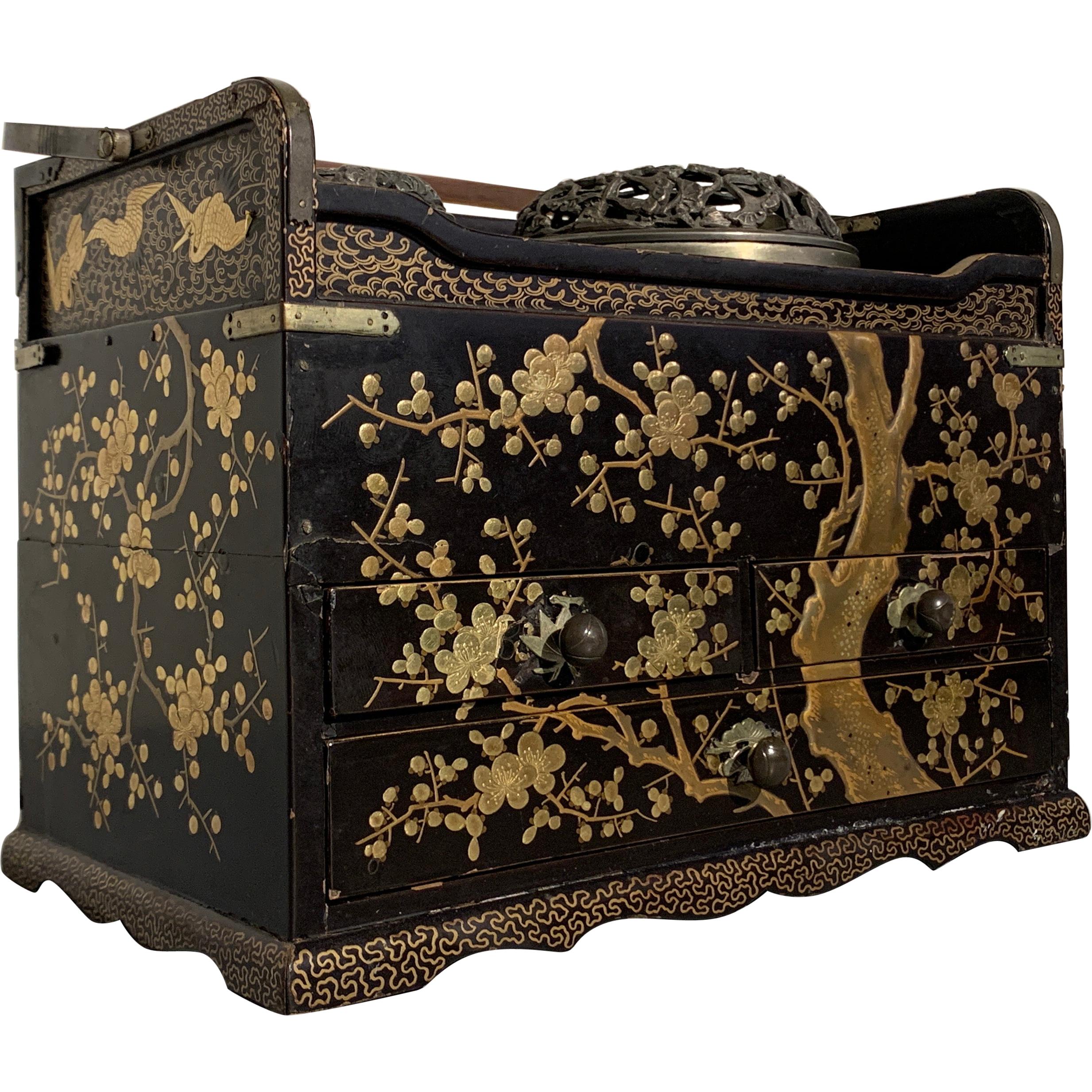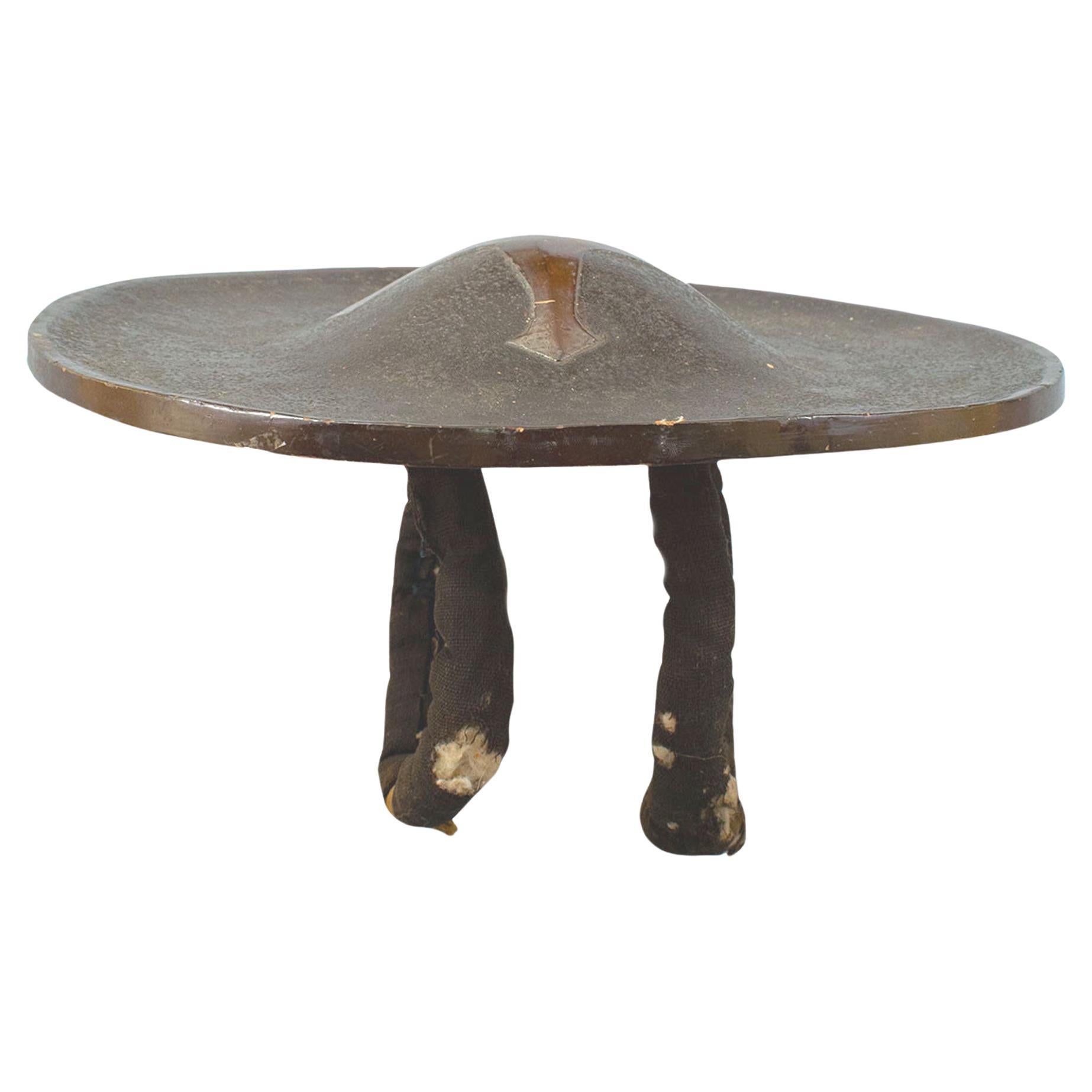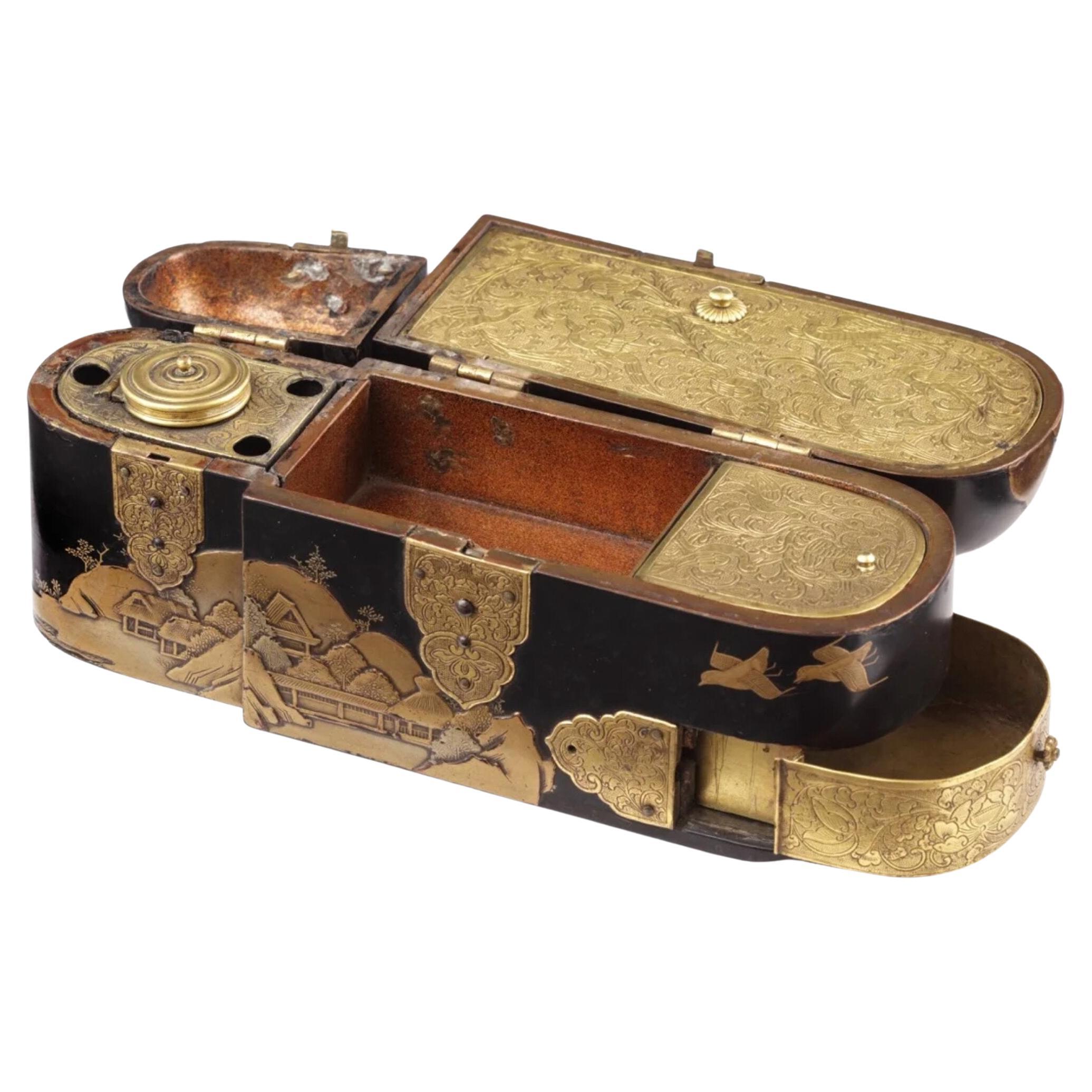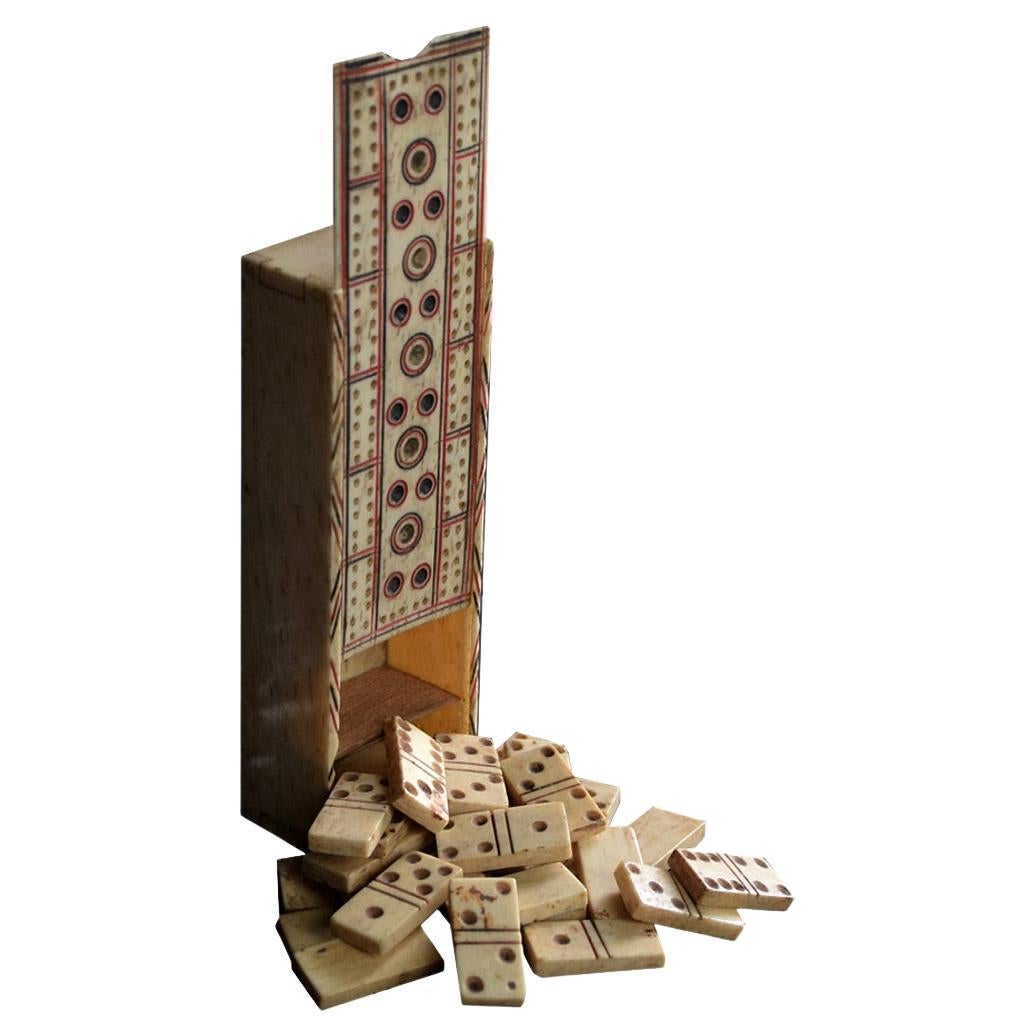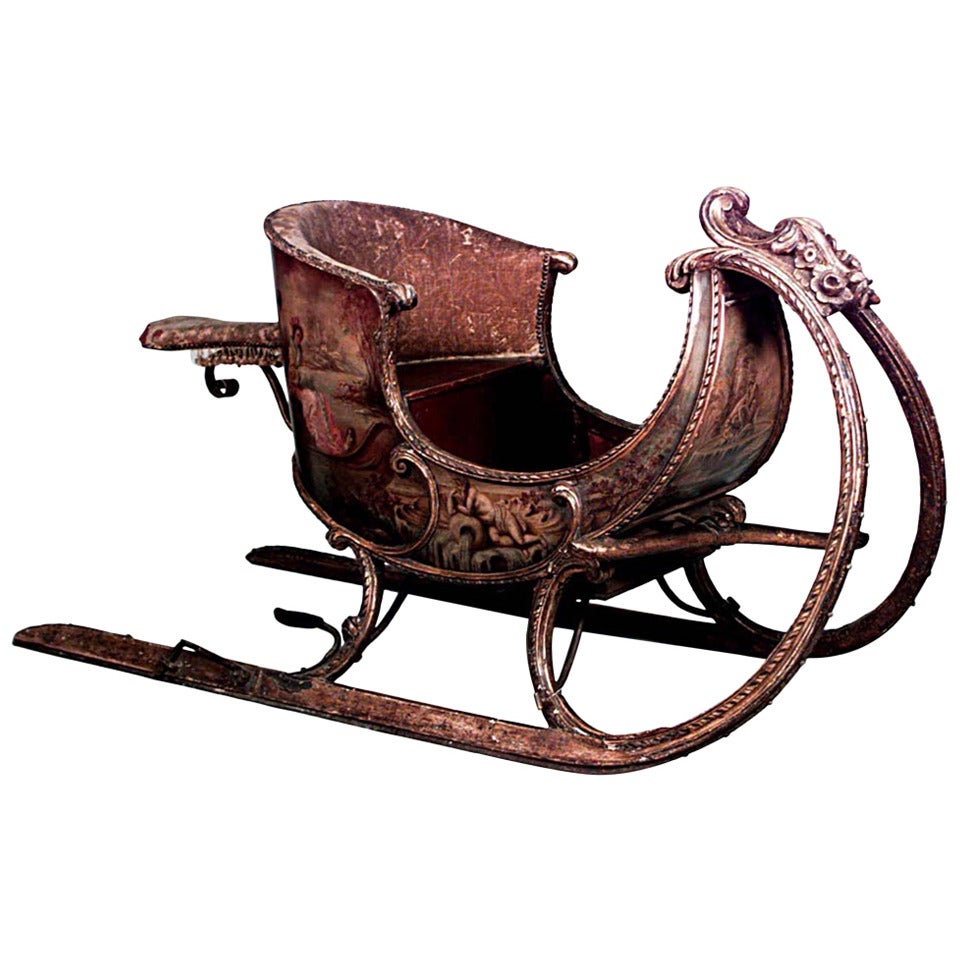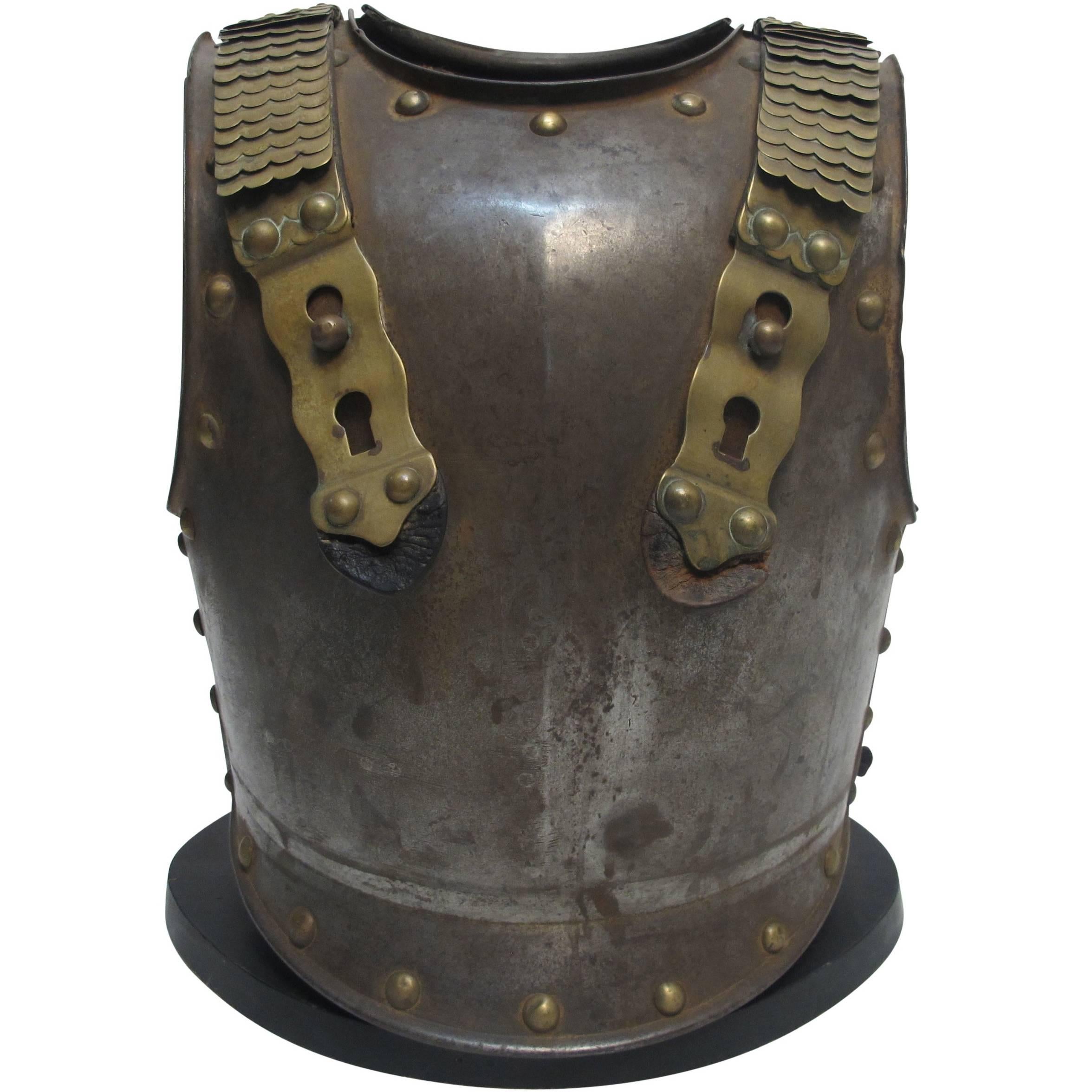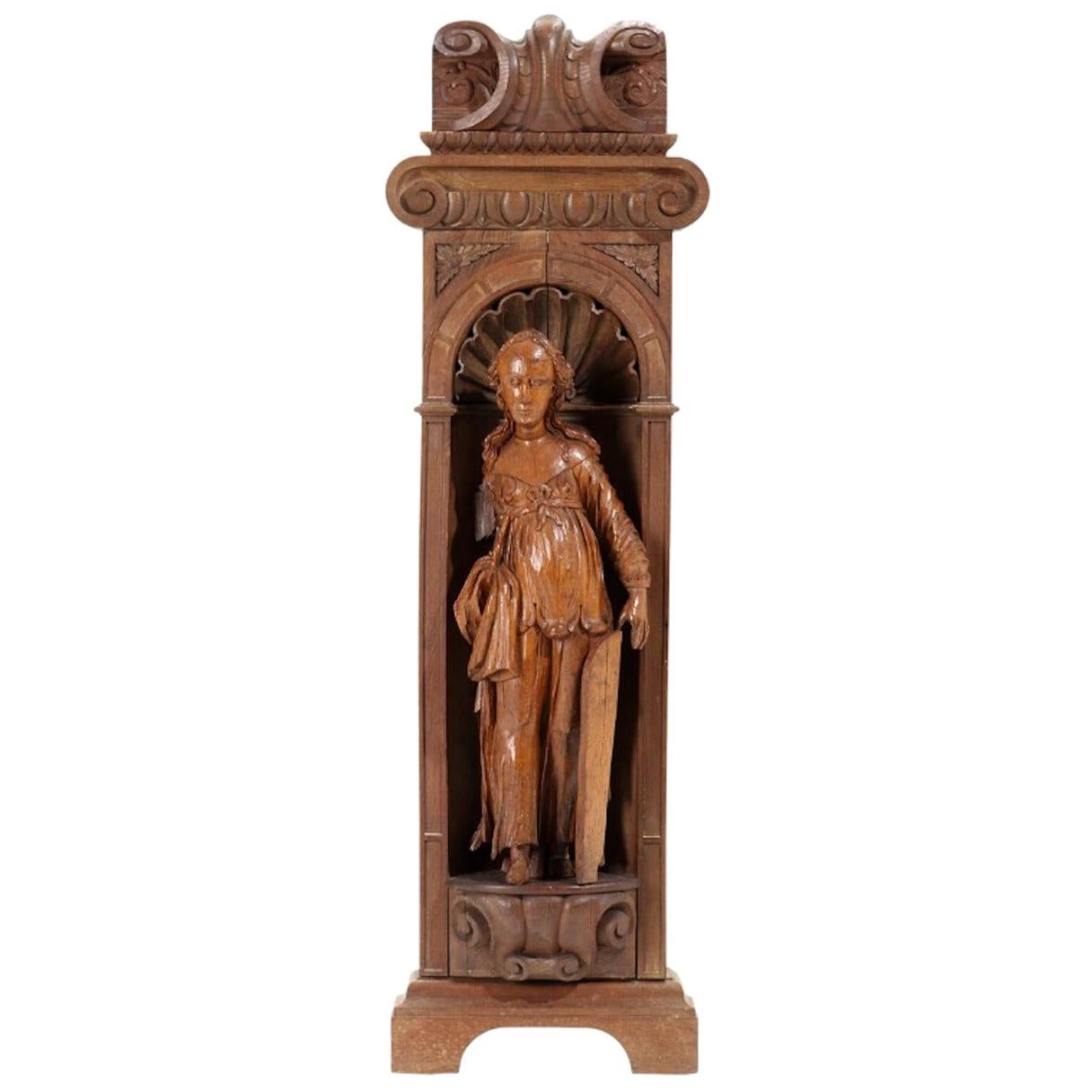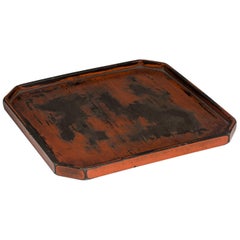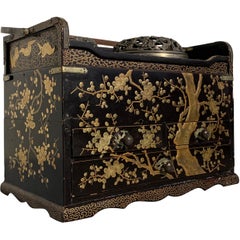
A Japanese Long War Fan, ‘Gunbai Uchiwa’, Late Edo Period, 18th-19th Century
View Similar Items
Want more images or videos?
Request additional images or videos from the seller
1 of 9
A Japanese Long War Fan, ‘Gunbai Uchiwa’, Late Edo Period, 18th-19th Century
About the Item
- Dimensions:Height: 29.34 in (74.5 cm)Width: 0.2 in (5 mm)Depth: 8.67 in (22 cm)
- Materials and Techniques:Wood,Lacquered
- Place of Origin:
- Period:
- Date of Manufacture:circa 1800
- Condition:
- Seller Location:Milano, IT
- Reference Number:Seller: 14971stDibs: LU4250213017032
About the Seller
5.0
Recognized Seller
These prestigious sellers are industry leaders and represent the highest echelon for item quality and design.
Established in 2005
1stDibs seller since 2018
10 sales on 1stDibs
Typical response time: 1 hour
More From This SellerView All
- Inro by Mochizuki Hanzan (1743-90?) Edo Period, 18th centuryLocated in Milano, ITMochizuki Hanzan (1743-90?) Edo Period, 18th century Decorated with inlaid colored ceramic with a stag and maple leaves Height: 8.4 cm Sealed Hanzan Mochizuki Hanzan (1743-90?...Category
Antique 18th Century Japanese Lacquer
MaterialsWood
- Five-Case Inrō 19th Century Signed Kajikawa Saku Japanese Lacquer BoxLocated in Milano, ITSigned: “Kajikawa saku” and with a red pot seal Height: 3 1/8in (7.9cm) Provenance: Michael Tomkinson Collection Leonard Haber Collection Literature: Michael Tomkinson, A Japanese Collection, London: George Allen, 1898, no. 300 Each case with slightly recessed joints and with different grounds, including kinji, nashiji, togidashi maki-e and gyobu-nashiji, on the obverse decorated with a treasure ship laden with the attributes of the Seven Gods...Category
Antique 19th Century Japanese Lacquer
MaterialsWood, Lacquer
- Japanese Negoro Lacquer Tray 'Oshiki', 16th CenturyLocated in Milano, ITAntique Negoro lacquer wares were produced at the Negoro-ji temple complex in Izumi Province. The red layers of lacquer on Negoro wares are intended to ...Category
Antique 16th Century Japanese Lacquer
MaterialsWood
- Japanese Lacquered Basin with Ear-Shaped Handles 'Mimidarai', 17th CenturyLocated in Milano, ITWooden basin with ear-shaped handles decorated with hiramaki-e lacquer and gold and silver kirigane on a nashi-ji ground. The large and thick antique woo...Category
Antique 17th Century Japanese Lacquer
MaterialsWood
- Okitenugui Kabuto Samurai Helmet Shaped as a Head Towel Saika, Early Edo PeriodLocated in Milano, ITOkitenugui kabuto Samurai helmet shaped as a head towel Saika, early Edo period, 17th century The Haruta armorers who moved to Kii province in the early 17th century, took the name from the village where they worked, Saika, near Wakayama, possibly on request of the local daimyo, Asano Yukinaga, a great armour amateur. Specialised in the construction of plate helmets, they produced mainly two typologies of kabuto: one with six plates covered with a chrysanthemum-shaped plate on top and one shaped as a “head towel”, called okitenugui. The latter type of kabuto employs very heavy plates crafted in a curved manner and was improved in order to make it resistant to firearms. This okitenugui kabuto features some distinctive decorations of the Haruta school, including the application of cut-out iron elements, including eyebrows, washers and lozenge-shaped decorations on the sides. The ring on the top, however, is a rare feature and could be used to hold a small war flag.Category
Antique 17th Century Metalwork
MaterialsIron
- Late 17th Early 18th Century Nabeshima Japanese Porcelain Plate Fruit DesignLocated in Milano, ITDish with karatuuri (melon) design Late 17th-early 18th century Porcelain decorated with cobalt blu underglaze and red fruits Diameter 15.2 cm Nabeshima ware was made at Okawachi near Arita in Kyushu under the authority of the Nabeshima clan. The feudal lords of Nabeshima were so proud of their technological skill, that throughout the Edo period (1615-1867) they gave porcelain (and swords) as presents to the lords of other provinces. Most of Nabeshima porcelain...Category
Antique Late 17th Century Japanese Ceramics
MaterialsPorcelain
You May Also Like
- Japanese Lacquer Smoking Box, Tabako Bon, Edo Period, 19th CenturyLocated in Austin, TXA very fine Japanese maki-e lacquer decorated tabako bon, or smoking box, late Edo Period, mid-19th century, Japan. The elegant smoking box of black lacquer decorated with a wonderful gold lacquer takamaki-e design of a gnarled and elegantly twisted plum tree with branches in full bloom. A border of golden cranes in flight to the top. The smoking box, called a tabako bon, is comprised of an open section at the top with inset with two cylindrical metal canisters...Category
Antique Mid-19th Century Japanese Edo Lacquer
MaterialsLacquer
- Burmese Kammavaca Giltwood Box, Stand, and Manuscript, 18th/19th CenturyLocated in Austin, TXA gorgeous Burmese carved and gold leafed teakwood stand and cover for a kammavaca manuscript, late 18th or early 19th century, Burma. The manuscript chest is heavily rococo influenced, speaking to the French presence in the region at the time. The carved teak stand is formed as a raised platform set upon four large scrolling acanthus leaf feet, with carved flour-de-lis to the apron. The cover for the stand is also carved from teak, and features a series of rectangular cartouches, each set with a red foil backed glass "gem", surrounded by shell inlay, and embellished with green and silver foil backed glass sequins. The top of the cover features the same design motif, with the addition of thayo lacquer design elements, and is strongly reminiscent of Tibetan manuscript...Category
Antique Early 19th Century Burmese Rococo Lacquer
MaterialsFoil, Silver Leaf, Gold Leaf
- TOPPAI JINGASA EDO PERIOD - 18-19th Century - JapanLocated in TEYJAT, FRThis is a custom-made historical Japanese hat known as Jinggasa, worn by samurai during the Edo period (1603-1868), around the 18th to 19th century. Within the category of Jingasa, t...Category
Antique Late 18th Century Japanese Edo Arms, Armor and Weapons
MaterialsLeather, Textile, Paper
$384 Sale Price20% Off - JINGASA - ICHIMON-GASA EDO Period 19th Century Samurai Helmet JapanLocated in TEYJAT, FRJINGASA - ICHIMON-GASA EDO Period 19th Century Jingasa, flat-shaped Samurai headdress made of wood, the exterior covered with black lacquer depicting a brown kamon, a Japanese heral...Category
Antique Mid-19th Century Japanese Edo Arms, Armor and Weapons
MaterialsLeather, Textile, Wood
$393 Sale Price20% Off - Rare 17th Century Japanese Export Lacquer Medical Instrument BoxLocated in Amsterdam, NLA rare Japanese export lacquer medical instrument box Edo-period, 1650-1700 L. 19 x W. 6 x H. 8.5 cm This unconventionally shaped lacquer b...Category
Antique 17th Century Japanese Edo Lacquer
MaterialsGold
- A Very Good 19th Century Iron & Mixed Metal Tsuba, Japan Edo Period (1603-1868)Located in Ottawa, OntarioA finely decorated iron & mixed metal tsuba, showing a dark-brown iron ground decorated in low relief with organic inspired motifs in gold, silver & copper.Category
Antique Mid-19th Century Japanese Edo Metalwork
MaterialsGold, Silver, Copper, Iron
$1,200 Sale Price20% Off
Recently Viewed
View AllMore Ways To Browse
Large Japanese Fan
Antique Metal Fan
Antique Metal Fans
Metal Antique Fan
Edo Samurai
Uchiwa Fan
Large Asian Fans
Antique War Hammer
Large Uchiwa
Lacquered Japan
Lacquer Japan
Japanese Lacquered
Asian Black Lacquer
Asian Black Lacquer Furniture
Black Lacquer Asian
Antique Japanese Lacquer
Japanese Antique Lacquer
Japanese Lacquer Antique
